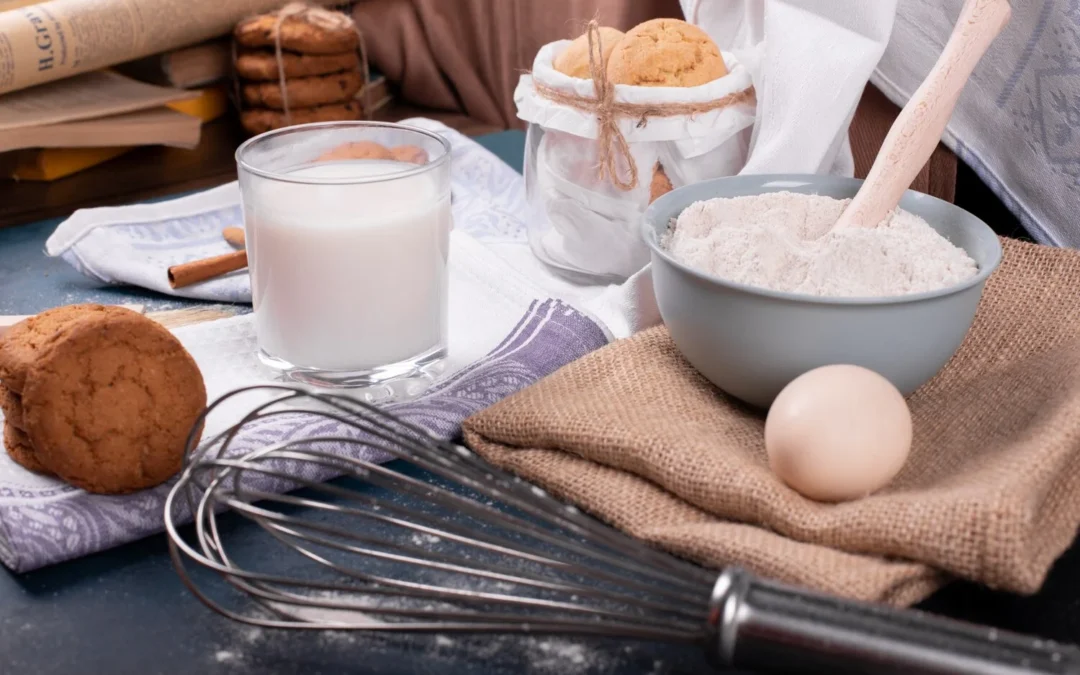In recent years, the culinary sphere has observed a burgeoning rise in gluten-free diets. Not merely a transient trend, its ascendancy bears significant implications for baking. Mastering the nuances of gluten-free baking is not just an alternative way of cooking; it’s crucial for those with celiac disease and preferred by others for various health or dietary reasons.
Understanding Gluten: A Quick Dive
At its core, gluten is a complex protein found predominantly in wheat, rye, and barley. Many opt to eschew it due to intolerances, allergies, or autoimmune disorders. In traditional baking recipes, gluten’s unique properties provide the structure and elasticity that many are familiar with—properties that give bread its rise and cakes their fluffiness.
Foundations of Gluten-Free Baking
Embarking on the gluten-free baking journey mandates a well-stocked pantry. Essential ingredients span from almond flour and rice flour to the binding xanthan gum. Contrary to wheat flours, gluten-free flour often requires a blend to achieve similar texture and results, ensuring your baked goods lack neither flavor nor structure.
The Art of Blending Flours
Blending different gluten-free flours can often feel akin to alchemy. Their synergy often elevates the end product’s quality, banishing grittiness. Flour blends like rice flour mixed with starches or almond flour combined with coconut flour are popular combinations that bakers swear by.
Moisture Management in Gluten-Free Baking
Hydration is the unsung hero of gluten-free breads and recipes. The right amount of liquid is paramount to avoid baked goods that resemble the Sahara. Tips like using a measuring cup correctly and incorporating high-moisture ingredients like fruit or yogurt can ensure your muffins or bread retain moisture.
Binding Agents: Keeping It All Together
In the absence of gluten, agents like xanthan gum, guar gum, and chia seeds become indispensable. However, alternatives like flaxseed offer comparable binding properties for those who prefer a more natural route.
The Secret of Leavening Without Gluten
Achieving the perfect rise in your baked goods sans gluten might appear Sisyphean. Yet, you can recreate the magic by tweaking yeast, baking powder, or baking soda in minimal quantities and understanding its science. Techniques like letting the dough rest longer or adding an extra egg or eggs can make all the difference.
Flavor Enhancements in Gluten-Free Baking
Selecting the right sweeteners, vanilla extract, and extracts can elevate your baked delicacy from good to gourmet. Moreover, integrating nuts, seeds, and diverse fruits augments flavor and enriches the nutritional content.
Dough and Batter Consistency
Texture is pivotal. Recognizing the right consistency—whether for bread dough or cake batter—lays the foundation for success. Some baking recipes might require more water, while others benefit from an additional tablespoon of butter.
Adapting Traditional Recipes to Gluten-Free
Transitioning from traditional to gluten-free recipes is an art infused with a smidge of science. It’s not just about replacement; it’s about understanding the inherent properties of your substitute ingredients. Awareness of common pitfalls, for instance, using too much xanthan gum or not adjusting the oven temperature, can be a game-changer.
Bread Baking: The Gluten-Free Challenge
Bread, with its intricate texture and taste, is arguably the magnum opus for gluten-free bakers. Techniques that incorporate longer proofing periods or the inclusion of certain grains can be the difference between a dense loaf and one that’s airy.
Decadent Gluten-Free Desserts
From chocolate chip cookies to brownies, the realm of gluten-free desserts is vast and varied. With the right flour blend, the perfect amount of sugar, and expert advice on consistency, you can master gluten-free cakes, pies, and even tarts.
Savory Bakes: Beyond the Bread
Beyond bread and muffins lies a world of savory delights like pies, quiches, and pizzas. Crafting the impeccable gluten-free pizza crust or a biscuit that’s just the right amount of flaky is achievable with a little experience and the right recipe.
Baking Tools and Equipment Essentials
Tools wield power. From the humble spatula to the mighty oven, ensuring you have the essential tools and being aware of cross-contamination nuances is vital for any gluten-free baker.
Troubleshooting Common Gluten-Free Baking Issues
Why do certain products turn out gummy? Or why does that cake have a sudden canyon running through its center? Identifying common issues and, more importantly, knowing how to rectify them can turn potential disasters into delightful results.
Storing Gluten-Free Baked Goods
Maximizing freshness is both an art and a science. Best practices range from optimal cooling techniques before storage to understanding the benefits of the freezer. Plus, knowledge of reheating ensures that your baked goods taste just as good the next day.
Exploring Global Gluten-Free Delicacies
Every culture boasts its baking masterpieces. Delving into international gluten-free treats offers a gastronomic journey, from the French tarts to the Japanese rice cakes. Adapting these recipes can be a delightful challenge and a palatable reward.
The Importance of Label Reading
The devil is often in the details. Hidden sources of gluten can lurk in the most unexpected places. Making informed choices ensures safe baking, which sometimes requires little investigative work on ingredient labels.
Staying Inspired in the Gluten-Free Baking Journey
As with any journey, staying inspired is key. Curating a collection of trusted recipes, exploring new flour blends, or engaging with online communities can rekindle passion and offer new insights.
Conclusion
The realm of gluten-free baking, with its challenges and intricacies, offers boundless opportunities for exploration and learning. As you embrace its joys and intricacies, may every bite be a testament to your dedication and love for the craft.
Frequently Asked Questions
How long has gluten-free baking been around?
While gluten-free diets have ancient roots, the modern trend and baking methods have evolved mainly over the last few decades with increased awareness of gluten-related health issues.
Are gluten-free baked goods healthier?
Gluten-free doesn’t inherently mean healthier. The healthiness depends on the ingredients used. Some gluten-free products might have more sugar or fat to compensate for texture or taste.
Can I use regular baking tools for gluten-free baking?
Yes, but ensure they are thoroughly cleaned to prevent cross-contamination if they’ve been used with gluten-containing ingredients.




